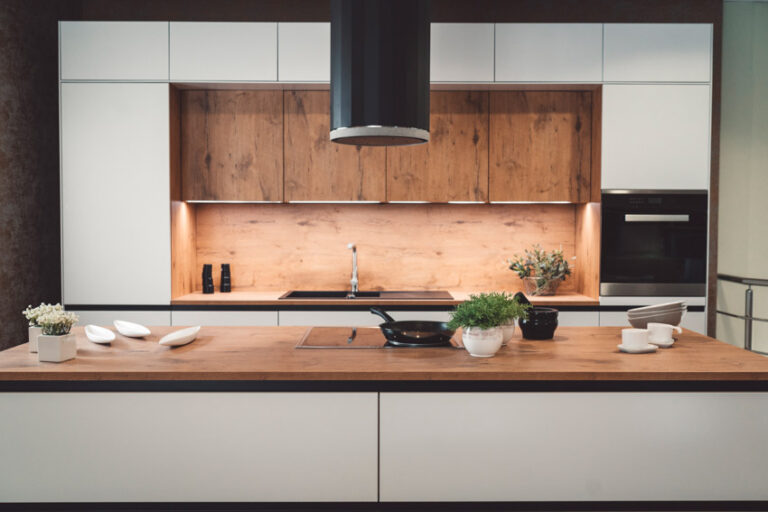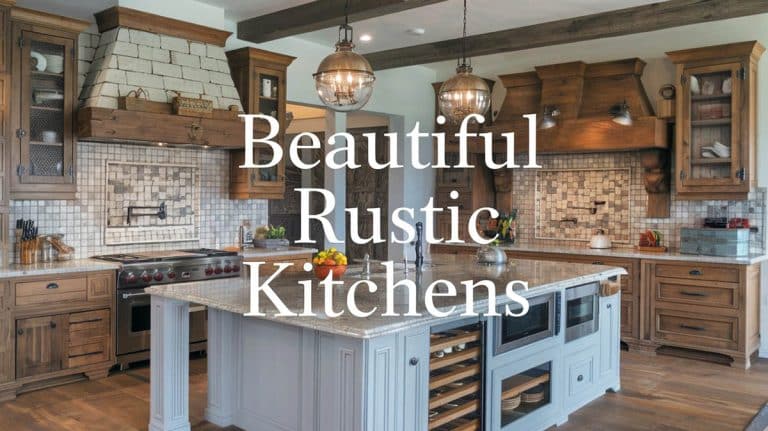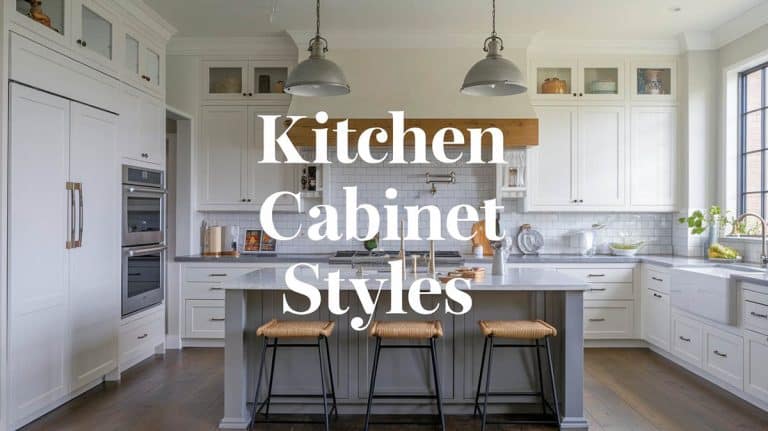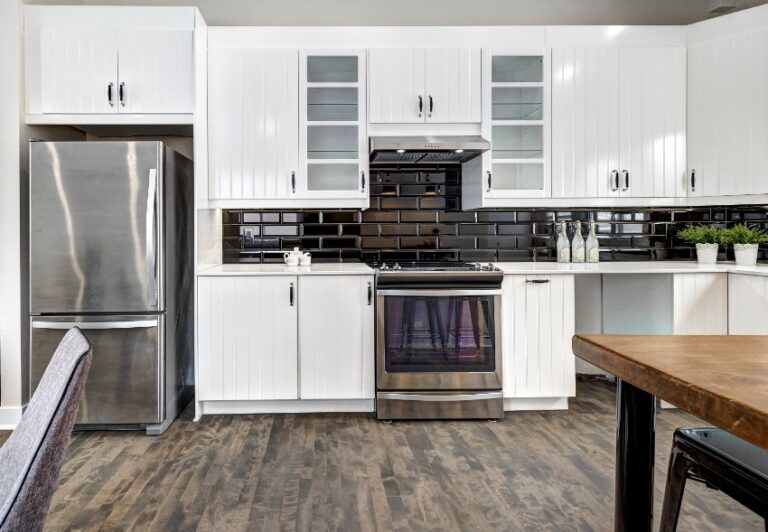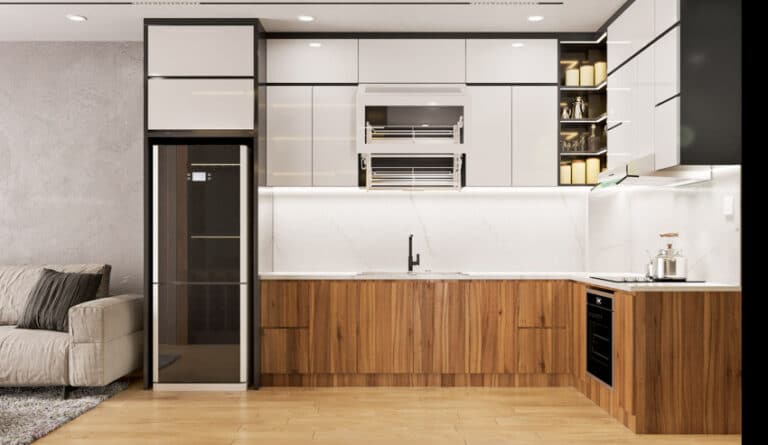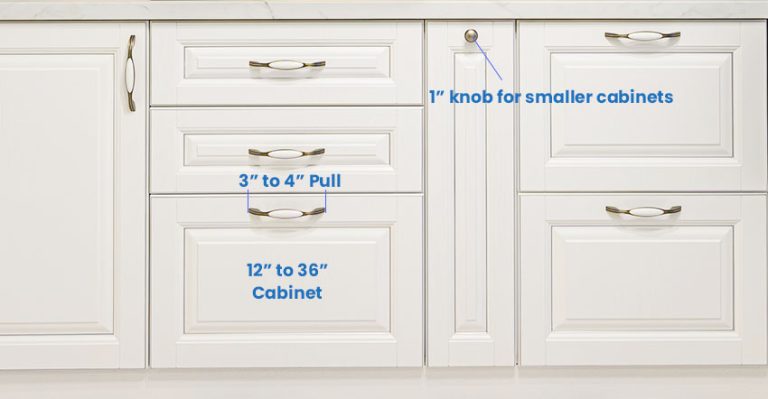5 Corner Stove Kitchen Layout ideas With An Efficient Work Triangle
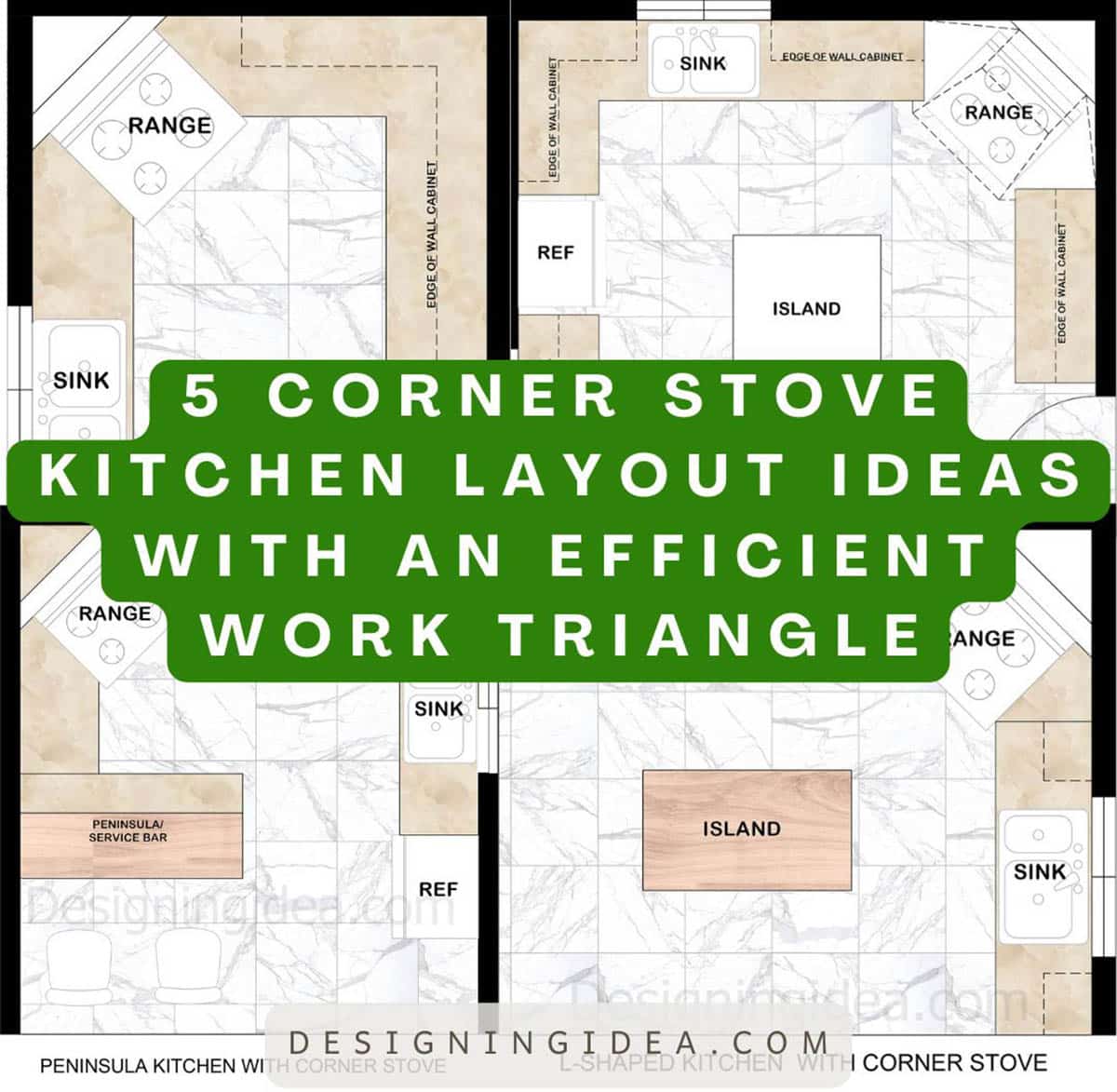
Are you thinking about the best way to add a stove in the corner of your kitchen? This can be a great choice for those looking to improve the workflow while cooking, increase usable counter-space and enhance the overall efficiency. I’ve created 5 corner stove kitchen layout ideas using small, U-shaped, L-shaped, galley and island floor plan that will help you create an open, effective and organized design you’ll love.
L-Shaped Kitchen Layout With Corner Stove
An L-shaped kitchen with corner stove is an efficient design with its optimal work triangle making cooking easier because of its access to surrounding counters and appliances.
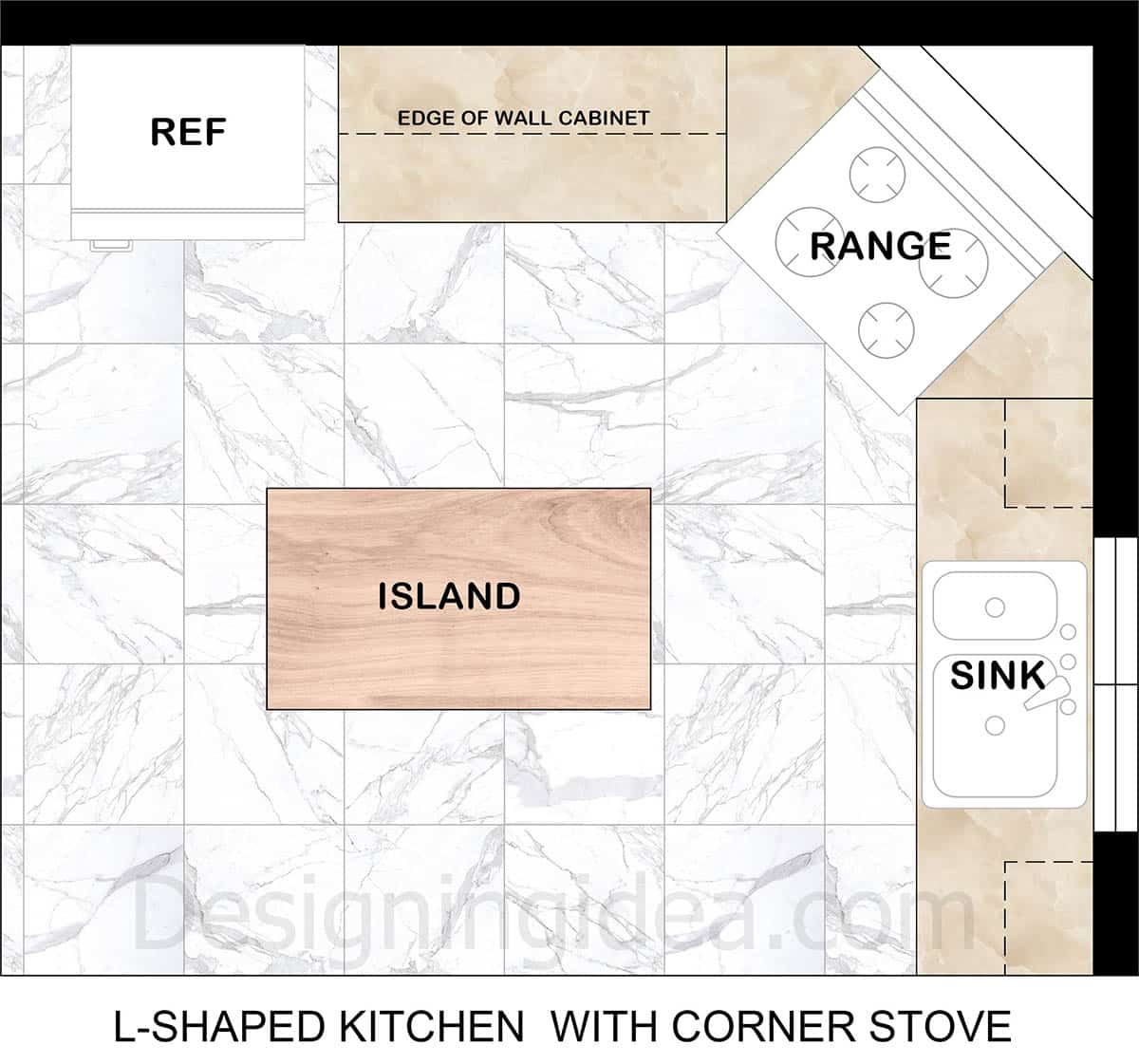
Floor Plan Details: This L-shaped design uses two adjoining walls with connecting countertops and cabinetry, combined with an angled corner stove and nearby island to create an effective cooking work triangle. This setup minimizes the footsteps between appliances and helps maximize the available counterspace. For best results each leg of the triangle leading to the refrigerator, sink and stove should be within 4 to 9ft apart for the best workflow.
For best results position the refrigerator away from the stove near the entrance of the kitchen space for ease of access. Position the sink under the window to maximize views while doing meal prep or cleaning. Ensure there’s adequate counter space on either side of the stove top and make sure that it does not interfere with the opening and closing of cabinet doors and drawers.
Why Choose This Design: The L-shape kitchen with corner range forms an efficient work triangle with the sink and refrigerator that makes excellent use of countertop space. This setup is effective for multiple cooks and as a natural gathering spot for friends and family.
Design Tips:
- Ensure the refrigerator, sink and oven are within 4′ to 9′ of each other.
- Consider adding seating to the island for eat-in dining. Make sure the island counter has an overhang of 12″ to accommodate legs underneath.
- Double check that the opening oven the oven does not interfere with the opening and closing of the nearby cabinets.
- Maintain at least 42″ to 48″ between the island and the perimeter cabinets for ease of movement.
- May need custom ventilation such as a range hood that fits the space provided and does not impact upper cabinetry.
U-Shaped Kitchen Floor Plan with Stove In the Corner
By using three adjoining walls this U-shape plan with corner stove frees up counter space and works excellent for small to medium sized kitchens for an efficient cooking work triangle.
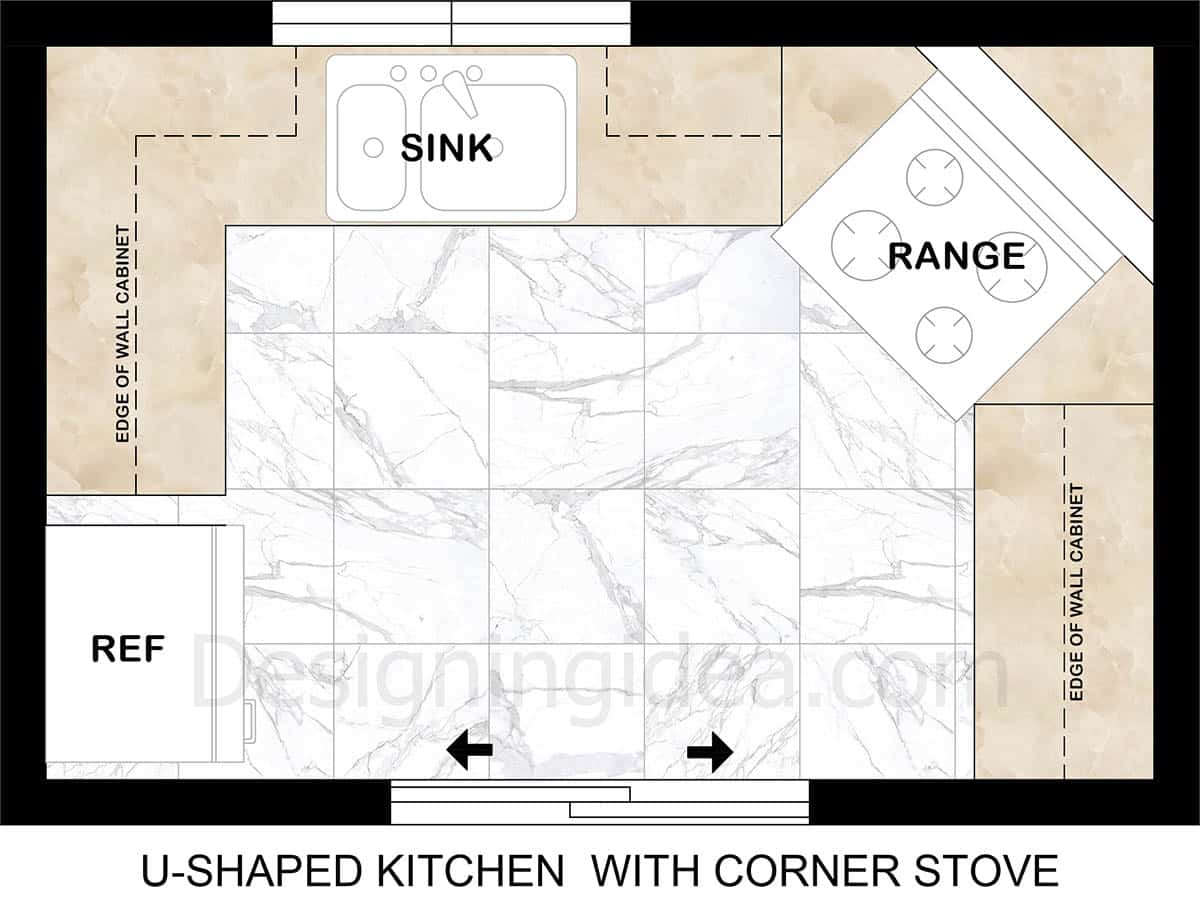
Floor Plan Details: This U-shaped design is flanked by prep space on three sides with an angled stovetop that frees up additional countertop area. The refrigerator is positioned near the entrance for easy access. Meanwhile the sink area is positioned along the back wall under a window to take in the views while cleaning or preparing food. Base and upper cabinetry are installed on three sides providing an abundance of storage.
Why Choose This Design: This setup creates an intimate cooking triangle that minimizes steps between the appliances leading to reduced movement, more productivity and a functional design. There also extensive cabinets and opportunities for specialized storage options.
Design Tips:
- The U-shaped kitchen design requires a minimum width of 10ft between opposing walls.
- Ensure the window provides plenty of natural light to avoid the space from feeling claustrophobic.
- Make sure the entrance is open to prevent the area from feeling too enclosed.
- Install a high-capacity hood vent above the stovetop with an adequate CFM rating. (See chart at end of page)
- Consider corner pull-out drawers to access hard to reach cabinet space.
Peninsula Kitchen with Angled Stove In The Corner
For a semi-open space feel, this G-shape kitchen layout with an extending countertop peninsula offers continuous surface area that runs to the angled range top, and allows the cook to easily interact with guests..
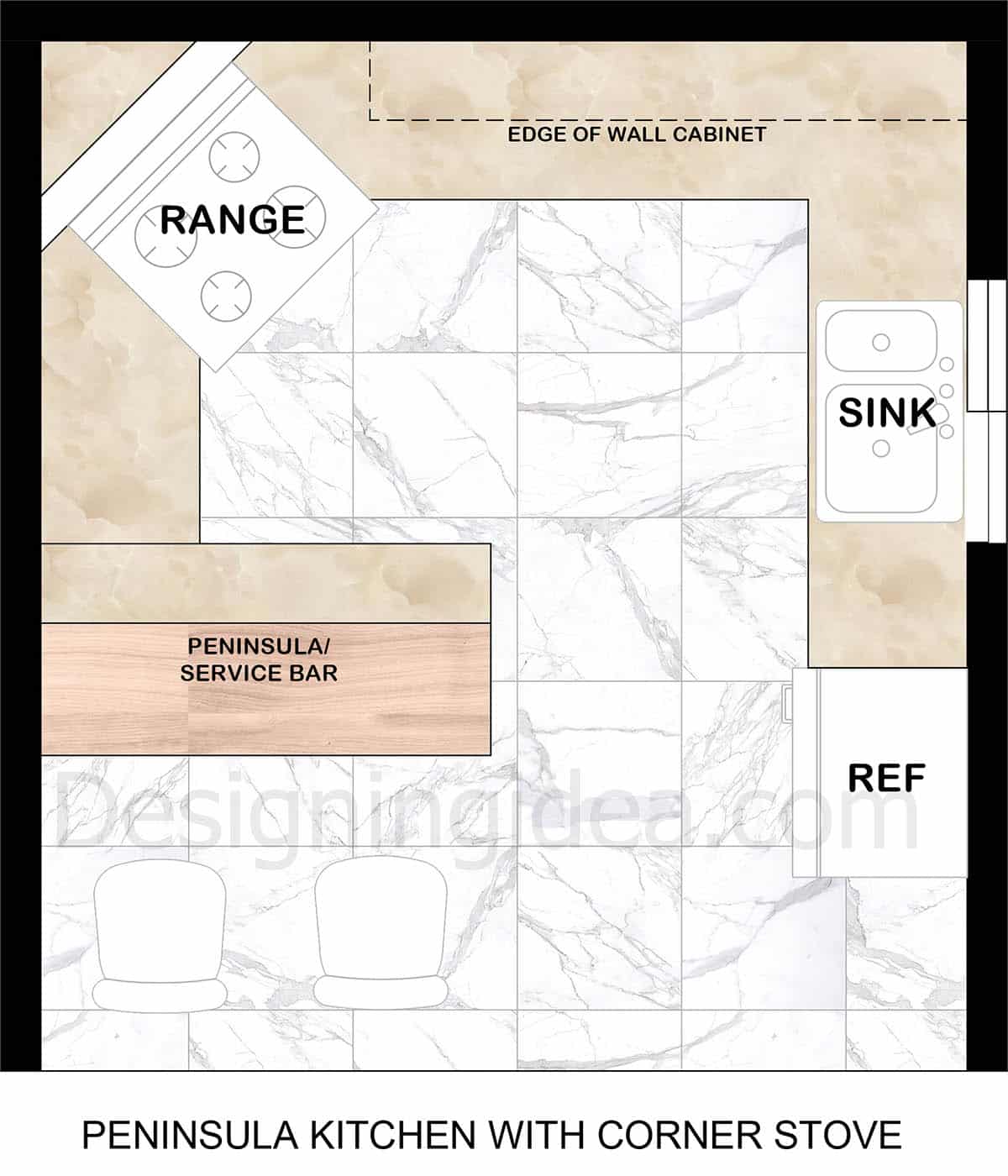
Floor Plan Details: Having a kitchen with a peninsula is useful if one wants a semi-enclosed cooking area with room for eat-in dining and the ability to easily interact with friends and family. This setup is ideal for room dimensions that are not quite large enough to accommodate a central island, but would still like the opportunity to have a countertop overhang with bar stools. This design allows for open sightlines to other living areas such as the dining or living room, which is useful for families with children.
Why Choose This Design: The addition of a peninsula with breakfast bar or counter overhang creates a casual dining space that is useful for facilitating conversations. The angled stovetop in the corner allows one to not have their back completely to guests and helps free up countertops for meal prep. This setup is ideal for medium sized kitchens with an open plan design.
Design Tips:
- Maintain 42″ of walking space around the peninsula for a clear pathway.
- Choose a peninsula countertop with at least a 12″ overhang to allow legs to fit underneath while sitting at the bar stool.
- Ensure you select bar stools that adjust for different guests and to make sure they fit under your counter.
- Plan for 24″ of peninsula width per person sitting. (Check out the recommended legroom chart below)
- Consider wiring electrical outlets to the peninsula for using small appliances while there.
- Install deep drawers in the peninsula to more easily access items and for better organization.
Galley Kitchen Design with Corner Positioned Stove
A galley style kitchen is an efficient use of space for small homes and apartments, and this design featuring a stove at the end of the corridor optimizes the counter space and maintains an effective work flow.
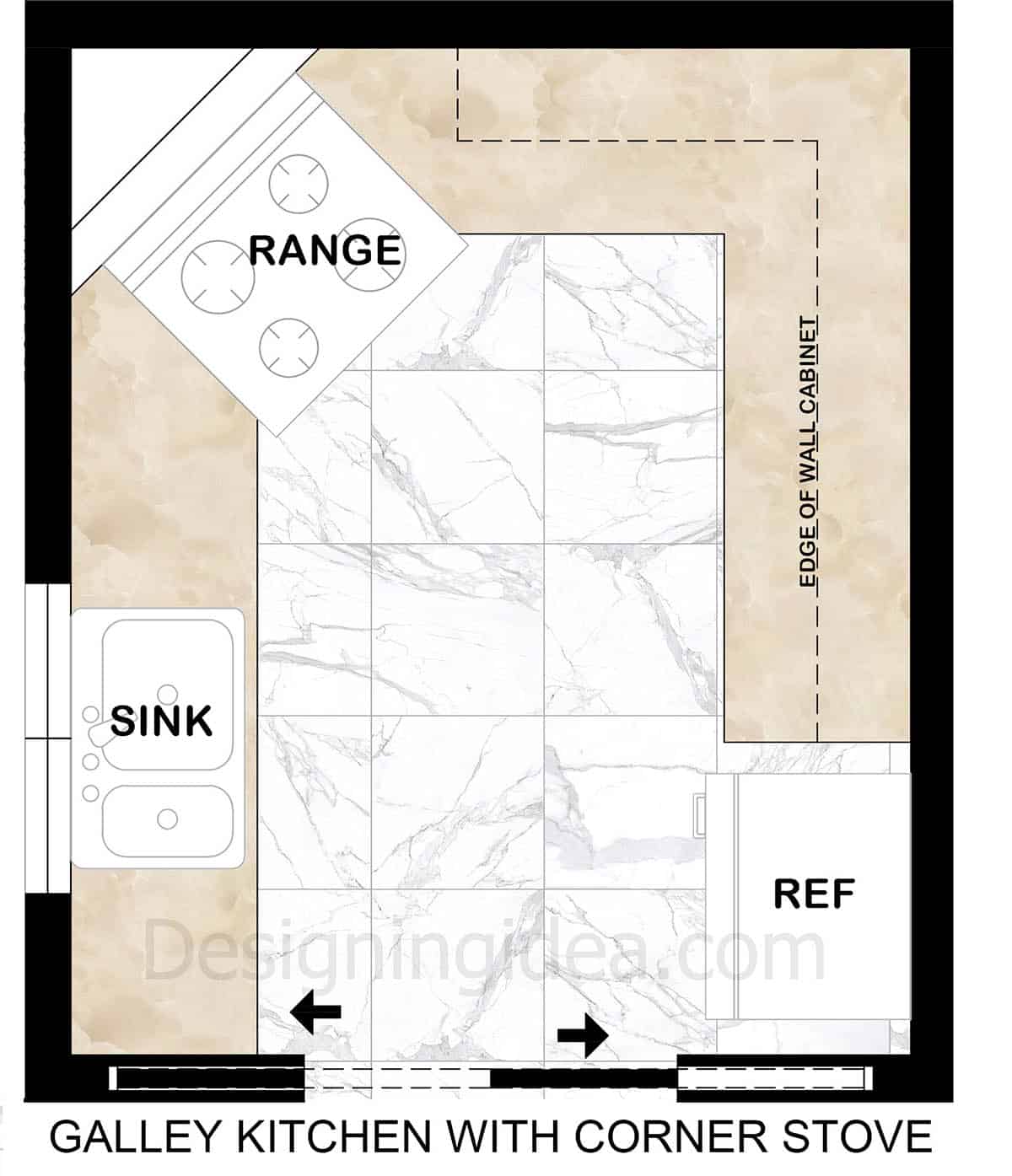
Floor Plan Details: With an angled range at the end of the galley corridor this layout creates an efficient work triangle with access to the sink and refrigerator within easy distance. For this setup the sink is placed under the window to maximize views, while the refrigerator is placed near the entry for easier access when needed. Wall cabinets and countertops extend along all walls providing plenty of storage and work space in the compact space. Having the range at the end of the corridor reduces congestion while cooking allowing for more than one person to more easily access the space. The downside is that a range at the end of the corridor requires a strong ventilation hood to vent and remove smoke and heat for the area.
Why Choose This Design: A galley style kitchen with an angled stove at the end helps maximize usable counterspace in a compact footprint. This functional layout provides an excellent work triangle with easy access to all zones without sacrificing efficiency.
Design Tips:
- Since the stove is placed at the end of the dead-end corridor a strong 600+ CFM range hood is required to properly vent the space.
- Maintain a walkway of at least 42″ through the center to provide room to walk.
- Install task lighting under the cabinets to light the countertop surfaces.
- Use recessed lighting throughout or other lighting fixtures to maintain adequate illumination throughout.
- Keep the sink to stove distance at between 48″ to 60″ for best cooking and meal prep efficiency.
Island Kitchen with Corner Installed Stove
A kitchen with an island offers a central surface to use for prep space, storage and even seating and when combined with a diagonally placed stove it creates a effective cooking zone.
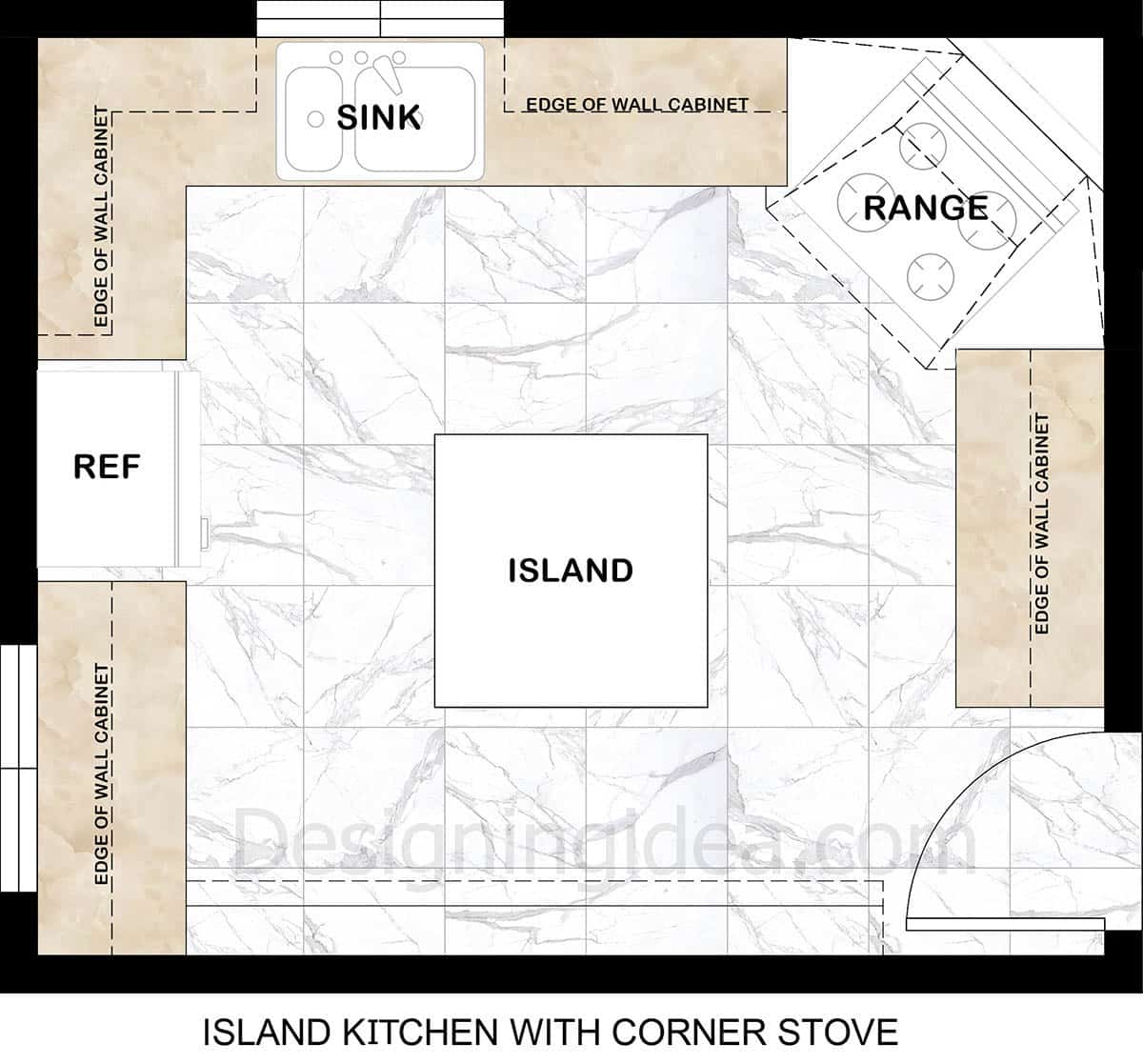
Floor Plan Details: A kitchen layout with an island is perfect for those looking for a stylish way to maximize the usable surfaces and promoting an open-feel. An island with an overhang can be used to pull up bar stools for seating and the cabinets underneath can store small appliances or other essentials. Having the island within close proximity of the work triangle with the range, sink and refrigerator is effective for multi-tasking and efficient cooking.
Why Choose This Design: An island in the kitchen offers plenty of flexibility and looks stylish as it becomes the room’s focal point. It’s closeness to the stove and kitchen work triangle adds efficiency to the design.
Design Tips:
- An island requires a kitchen space that is at least 12ft wide by 15ft long to ensure there adequate clearances around all of the elements.
- The range arrangement requires a minimum of 15″ of counter space on either side of the stove to ensure there’s space for prepping food.
- Add electrical outlets in the island to make it possible to run small appliances from this area.
- Install an additional small sink in the island for prep work or mixing drinks.
- Use an island overhang of between 12″ and 15″ for comfort while seated.
- Maintain a walkway clearance of 42″ to 48″ in between the island and the surrounding cabinetry to avoid overcrowding.
- Ensure at least 36″ in front of the refrigerator so it can open cleanly.
- The standard lower cabinets have a depth of 24″ with 15″ of space between the countertop and the upper storage units.
- consider pendant lights over the island’s counter for a stylish design and to better illuminate the surface.
Key Kitchen Space Requirements
| Kitchen Element | Minimum Space Required |
|---|---|
| Walkways (Between Island & Perimeter Cabinets) | 42 inches (107 cm) (min) for work areas; 48 inches (122 cm) for higher traffic areas |
| Island Width | 36 inches (91 cm) (min); 42–48 inches (107–122 cm) is preferred |
| Island Length | 4–6 feet (120–180 cm) depending on kitchen’s size |
| Stove to Sink Distance | 48–60 inches (122–152 cm) for efficient workflow |
| Stove to Refrigerator Distance | 48–72 inches (122–183 cm) to prevent overcrowding |
| Counter Depth | 24 inches (61 cm) is standard |
| Seating Overhang (if adding stools) | 12–15 inches (30–38 cm) for comfortable seating |
| Corner Stove Cabinet Width | 36–48 inches (91–122 cm) to accommodate the angled placement |
Kitchen Configurations for an Island & Stove In The Corner
| Kitchen Type | Minimum Size (L x W) | Notes |
|---|---|---|
| Small Kitchen with Island & Corner Stove | 12’ x 15’ (3.7m x 4.6m) | Narrow island (24” width) may be required |
| Mid-Sized Kitchen | 14’ x 16’ (4.3m x 4.9m) | Standard island (36–42” width) fits comfortably |
| Large Kitchen | 16’ x 18’ (4.9m x 5.5m) or larger |
Recommended Stove Fan CFM Based on Kitchen Size
| Kitchen Size (Sq. Ft.) | Ceiling Height (Ft.) | Kitchen Volume (Cu. Ft.) | Recommended CFM (Volume-Based) | CFM for Gas Stove (BTUs) |
|---|---|---|---|---|
| Small Kitchen (10′ x 10′) | 8 ft | 800 cu. ft. | 200 CFM | 300–500 CFM (30,000–50,000 BTUs) |
| Medium Kitchen (12′ x 15′) | 9 ft | 1,620 cu. ft. | 400 CFM | 500–700 CFM (50,000–70,000 BTUs) |
| Large Kitchen (15′ x 20′) | 10 ft | 3,000 cu. ft. | 750 CFM | 700–1,200 CFM (70,000–120,000 BTUs) |
Recommended Bar Stool Legroom by Counter Height
| Counter Height | Recommended Overhang (Inches) | Legroom Needed (Inches) | Stool Height |
|---|---|---|---|
| Standard Counter Height (36″) | 12–15 inches | 15 inches | 24–26 inches (Counter Stools) |
| Bar Height (42″) | 15–18 inches | 18 inches | 28–30 inches (Bar Stools) |
If you’re still on the fence about using a range in the corner of the kitchen, here’s a few of the advantages and disadvantages to consider.

